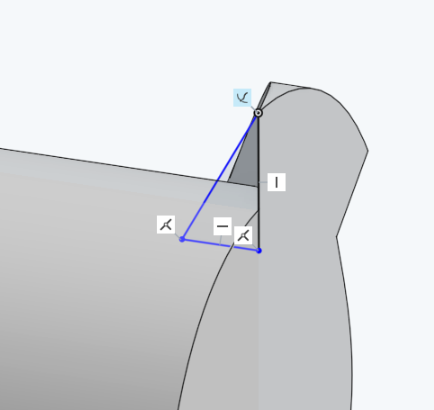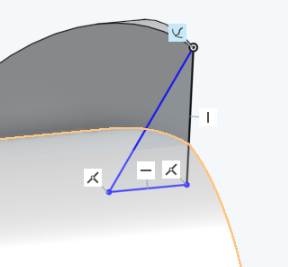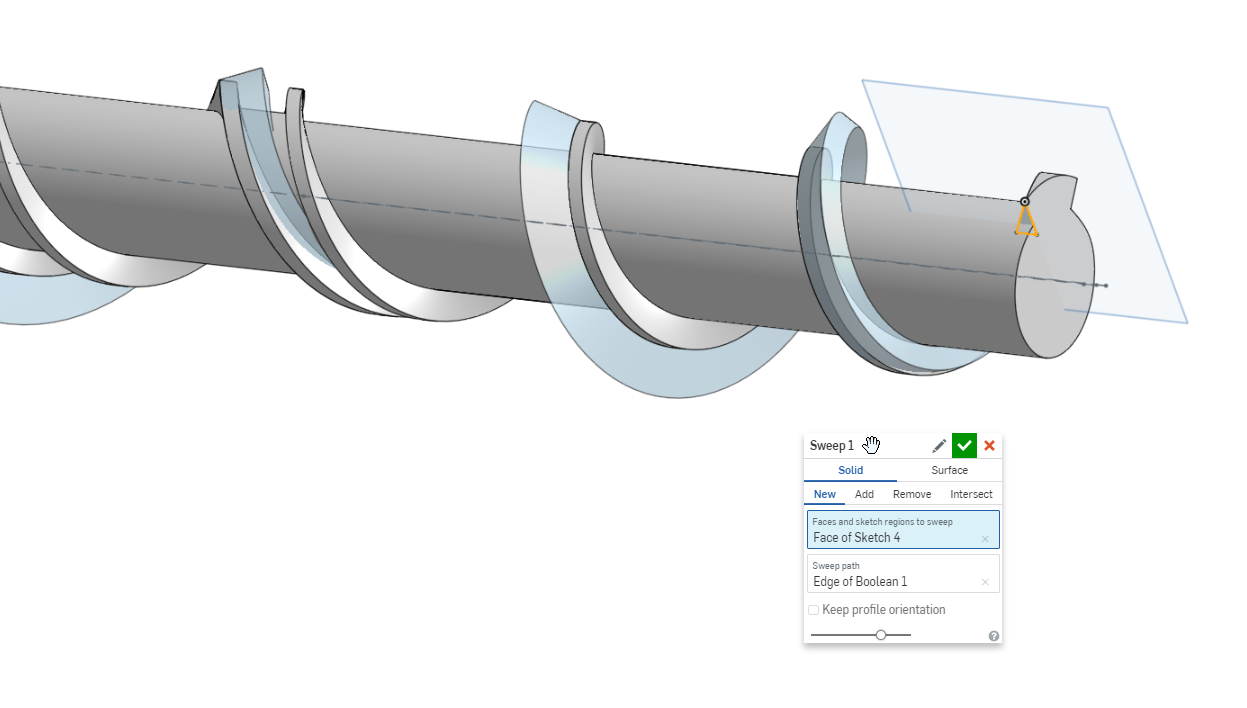Welcome to the Onshape forum! Ask questions and join in the discussions about everything Onshape.
First time visiting? Here are some places to start:- Looking for a certain topic? Check out the categories filter or use Search (upper right).
- Need support? Ask a question to our Community Support category.
- Please submit support tickets for bugs but you can request improvements in the Product Feedback category.
- Be respectful, on topic and if you see a problem, Flag it.
If you would like to contact our Community Manager personally, feel free to send a private message or an email.
Sweep with orientation control
 brad_phelan
Member Posts: 91 ✭✭
brad_phelan
Member Posts: 91 ✭✭
in General
It seems that opSweep lacks orientation control. I am sweeping a profile around an axis on a helix and the profile never stays aligned to the helix axis. For example if I start with a sketch with the top of the triangle with a pierce constraint on the helix


I then apply a sweep but the profile swings wildly around.

Ideally the following constraints should be maintained
X Axis of the profile plane should always stay parallel the cylinder axis.
The cylinder axis should be on the profile plane.
This blog post https://www.onshape.com/cad-blog/tech-tip-creating-a-thread suggest the process should work.
The problem may be that my helix is not strictly cylindrical as it part of an edge build by lofting.
However if opSweep had decent orientation control this should not be a problem


I then apply a sweep but the profile swings wildly around.

Ideally the following constraints should be maintained
X Axis of the profile plane should always stay parallel the cylinder axis.
The cylinder axis should be on the profile plane.
This blog post https://www.onshape.com/cad-blog/tech-tip-creating-a-thread suggest the process should work.
The problem may be that my helix is not strictly cylindrical as it part of an edge build by lofting.
However if opSweep had decent orientation control this should not be a problem
Tagged:
0
Comments
and at first that seem correct but it is not. The profile does not maintain the alignment that a thread cut / generate would require. You can see at the end of the sweep that the orientation has been lost.
The profile is now normal to the path. This is not what should happen.
and at the end the orientation is still correct
It needs some tuning to pick the correct number of intermediate profiles but is more robust for this use case than the simple sweep.
my solution
to Normal Surface Solution
The profile normal in both cases are tangent to the cylinder but because my solution has the addition contraint required for thread generation that the normal to the profile is always 90 degrees to the cylinder axis as well as being tangent to the cylinder.
Here is a model using konstantin's sketch wrapping feature to generate an irregular wrap curve floating above the
cylinder. I then try to sweep a triangle and keep it normal to the surface.However it drifts as I have described.
https://cad.onshape.com/documents/deabd60eb1b75883cea24b8d/w/40f99b947624fdb9c98412b6/e/1c15780fa6cbf42d32cb7412
I have linked my solution with the same curve and it doesn't drift.
https://cad.onshape.com/documents/deabd60eb1b75883cea24b8d/w/40f99b947624fdb9c98412b6/e/ca2268fe0929c4e3130b0016
( there is a small bug in my sweep code. The profile is rotated 90 degrees in the profile plane during the sweep but this doesn't distract from the other issue being demonstrated )
The end of the sweep with my solution
The end of the sweep with Sweep Normal
You can see that it my solution where I am much more explicit about the constraints the profile maintains it's correct orientation even under the stress of sweeping along such an irregular curve.
https://cad.onshape.com/documents/deabd60eb1b75883cea24b8d/w/40f99b947624fdb9c98412b6/e/ca2268fe0929c4e3130b0016
As for picking the right number intermediate profiles, I was thinking the same thing as Konstantin. Pick a tolerance for the max deviation of the normal or tangent vector at a set number of points along the path curve. Then, you can intelligently increase/decrease the number of subdivisions until you have the desired max deviation. Of course, this might be computationally expensive. Alternatively (if possible), you can add more intermediate profiles only where the path's curvature is greatest, leaving the straight sections with fewer profiles. Will opSweep allow you to choose the location of intermediate profiles?
It's late. Goodnight.
function evRefCS(context is Context, tangentLine is Line, refFace is Query) returns CoordSystem<br>{<br> var closestPointParam = evDistance(context, {<br> "side0" : refFace,<br> "side1" : tangentLine.origin<br> }).sides[0].parameter;<br><br> var faceNormal = evFaceTangentPlane(context, {<br> "face" : refFace,<br> "parameter" : closestPointParam<br> }).normal;<br><br> var dir = tangentLine.direction;<br> dir = dir - dot(dir, faceNormal) * faceNormal;<br><br> return coordSystem(tangentLine.origin, dir, faceNormal);<br>}and the transform requared isit allow you to create things like this, which is not currently achivable by sweep normal or something else
this type of profile orientation control is included in variable section sweep FS